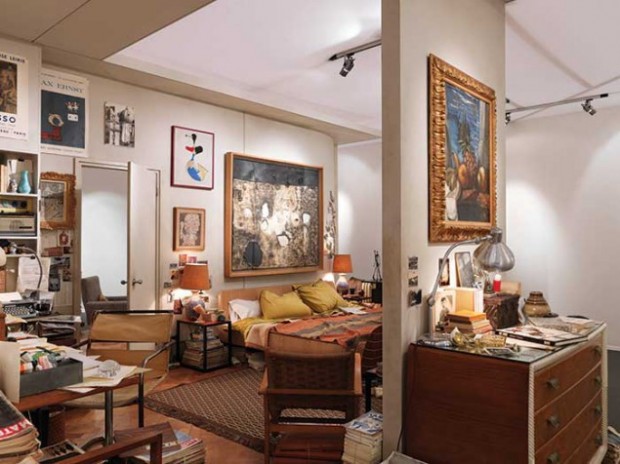You have no items in your cart. Want to get some nice things?
Go shopping
The early works of Bruce McLean (whom I heard speak yesterday), were created in passionate reaction to the traditions of his time. With pieces such as There’s a Sculpture on My Shoulder, in which McLean kneels beneath projections of New Generation monuments as if suffering under the weight of them, he hoped to show his desire to move away from the manifestos of modernism: to shake off the Bloomian “anxiety of influence”. But here at Frieze London the classics from which these contemporary artists endeavour to escape continue to press against their shoulders, for they are exhibited as part of Frieze Masters, a mere fifteen minute walk away.
Now in its third year, Frieze Masters is youthful in comparison to its contemporary neighbour. The set-up is similar: the white tent and well-dressed crowd prevail. There is a piece by Helen Mirra on show at Frieze London which categorizes shades of grey along the length of a measuring tape. According to this scale, the floors and walls of Frieze Masters vacillate between “leaden-grey” and “crumpled grey suit”.
Only one stand radically challenges this uniform greyness. The Helly Nahmad Gallery reinvents itself as the home of a Parisian-based art collector in the 1960s, devoting every detail to the credibility of this fiction. Cigarette butts inhabit scattered ash trays; dirty dishes lie untouched in the sink. Fading magazines celebrate the arrival of a man in space and the beauty of Bardot. Among the collector’s belongings hang several paintings: Ernsts, Dubuffets and Magrittes, in keeping with the trends of the time. The stand will “take us on a remarkable journey into [the collector’s] soul”, explains an accompanying pamphlet. And then – in cloying flattery of the egos of the fairgoers who observe the space – states that “genuine collectors, even today… if they have the ability to search out with love and compulsive honesty, may still construct extraordinary and unique memory homes, palaces, and theatres that will serve as witnesses to their time”. It is a bravura display of lifestyle advertising, making explicit the whisperings of the rest of the fair. The message is clear: this could be yours.
I turn away to survey the titans of twentieth-century art. Hockneys rub shoulders with Picassos and Warhols, while Churchill makes an uncharacteristically diminutive appearance in the stand of Richard Green. Advised by curator Adriano Pedrosa, the Masters’ “Spotlight” section draws attention to lesser-known artists working in the twentieth century: the beautifully textured pieces of Romanian painter Horia Bernea and the 1960s collages of Romare Bearden.
This is only a margin of the spread of art on offer here; the history of the works contained within this tent spans almost seven millennia. A seventeenth-century Japanese screen features on the same stretch of grey carpet as a first-century torso of Aphrodite, while the Old Masters proliferate. I cannot help but wonder how the contemporary artists over in Frieze London have the strength to perform or the will to create, when this great weight of history is bearing down upon their shoulders. It is a remarkable burden.

About Xenobe Purvis
Xenobe is a writer and a literary research assistant. Her work has appeared in the Telegraph, City AM, Asian Art Newspaper and So it Goes Magazine, and her first novel is represented by Peters Fraser & Dunlop. She and her sister curate an art and culture website with a Japanese focus: nomikomu.com.




